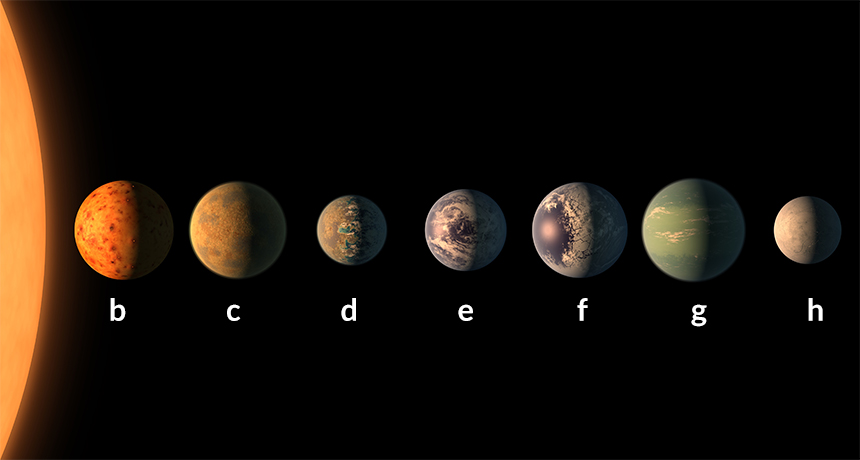The Momentous Discovery of an Entire New Solar System
This is an artist’s rendition of what the TRAPPIST-1 solar system might look like. Each of the Earth-sized planets is labeled only by a letter. Each planet size is an estimate. Image courtesy of NASA.
On February 23, 2017, seven rocky Earth-sized planets were found orbiting a red dwarf star, known as TRAPPIST-1, any of which could potentially possess liquid water and indubitably support life.
Nearly 40 light-years away, the recent planetary system, TRAPPIST-1, is named after the Belgian operated telescope in Chile which remarkably encountered two of the planets in the year 2016. Furthermore, with the successful assistance of ground-based telescopes, NASA’s Spitzer Space Telescope revealed five more stony worlds.
Mr. Daniel Scott, astronomy teacher, says, “Personally, I’m most interested in the high amount of water that is present in the TRAPPIST-1 system which makes each of the seven planets a potential candidate for life that is Earth-like.”
Additionally, three out of the seven planets are considered to be located in the habitable zone, an area revolving around the parent star where it is most sensible to reserve liquid water. As a result, the discovery of water vapor, such as the combination of oxygen and methane, has unmistakably indicated a possible life-bearing world.
If a person were to be standing on the surface of any of the dense planets, they would be able to easily see geologic features or clouds of neighboring planets in the sky. Unlike ordinary weather patterns on Earth, there are strong winds and extreme temperature changes; the planets may be tidally or dependently locked to their star which means each side will always be either day or night.
Certainly, Mr. Daniel Scott states, “I also think it is very cool that the planets are so close to their red dwarf star that they’re tidally locked. That makes for large ranges in heating and weather dynamics in the atmospheres.”
Lasting far longer than yellow stars like our Sun, red dwarf stars smolder or burn at much lower energy but live perhaps with lifespans lasting trillions of years, much longer than the present age of the universe. Although red dwarf stars, also called M-dwarfs, are pretty small and not very luminous, they comprise nearly 75 percent of the stars in the galaxy and TRAPPIST-1 is believed to be at least 500 million years old.
Future telescopes, including NASA’s James Webb Space Telescope, could help fathom such questions about possible life on the planets by closely examining the atmospheric gases of the TRAPPIST-1 planets. In conclusion, as technology of telescopes improves, one can expect more Earth-like planets to be discovered from all over our side of the Milky Way Galaxy.










